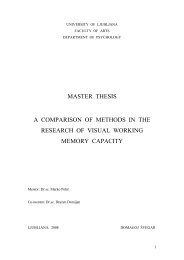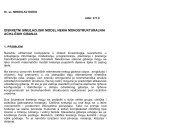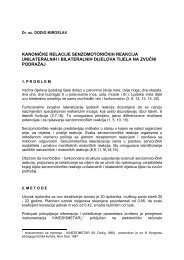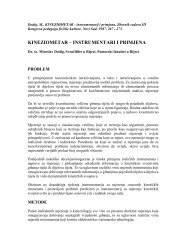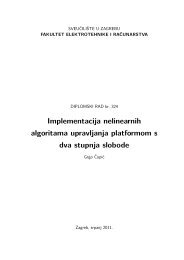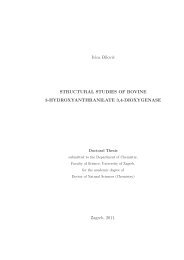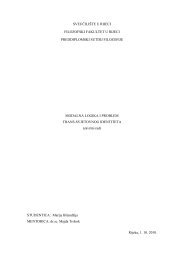Investigating Macroeconomic Determinants of Happiness in ...
Investigating Macroeconomic Determinants of Happiness in ...
Investigating Macroeconomic Determinants of Happiness in ...
You also want an ePaper? Increase the reach of your titles
YUMPU automatically turns print PDFs into web optimized ePapers that Google loves.
elationship between happ<strong>in</strong>ess and age (Frey and Stutzer, 2002a; Oswald, 1997). Summary<br />
statistics <strong>of</strong> all (micro and macro) variables are given <strong>in</strong> Table 2.<br />
Table 2 Summary statistics<br />
Variable Obs Mean Std. Dev. M<strong>in</strong> Max<br />
<strong>Happ<strong>in</strong>ess</strong> 30057 2.72 0.71 1 4<br />
Sex 30820 1.52 0.49 1 2<br />
Age 30803 44.87 16.85 17 101<br />
Education 30649 4.64 2.16 1 9<br />
Marital status 30689 2.48 2.08 1 6<br />
Employment status 30543 3.14 2.17 1 8<br />
Income scale 26468 4.52 2.50 1 10<br />
Gen. govt. exp. 30828 17.72 5.87 5.69 27.78<br />
Inflation 30828 47.81 192.27 0.54 1058.37<br />
Unemployment 30828 12.79 6.66 5.8 34.5<br />
GDP per capita 30828 10520.81 4422.48 3631.99 23010<br />
We additionally control for country and time fixed effects by <strong>in</strong>clud<strong>in</strong>g dummies for<br />
each country and wave under <strong>in</strong>vestigation (the reference country is Croatia; and the wave 3).<br />
Country dummies capture various unchang<strong>in</strong>g <strong>in</strong>fluences on reported happ<strong>in</strong>ess with<strong>in</strong><br />
nations, while the wave dummies capture any global shocks that are common to all countries<br />
dur<strong>in</strong>g each wave <strong>of</strong> surveys. We pool repeated randomly selected samples from the three<br />
waves <strong>in</strong>to a s<strong>in</strong>gle dataset. It should be noted, however, that we do not have the data for each<br />
country <strong>in</strong> each wave. Altogether 28 different comb<strong>in</strong>ations <strong>of</strong> countries and waves exist 4 ,<br />
mean<strong>in</strong>g that we have 28 values <strong>of</strong> each macroeconomic variable. The reason we do not have<br />
13(countries)*3(waves) = 69 different comb<strong>in</strong>ations <strong>of</strong> countries and waves is that either<br />
education or employment variable is miss<strong>in</strong>g <strong>in</strong> certa<strong>in</strong> years, and these are important control<br />
(micro) variables. Another reason is that is some countries the surveys were not undertaken <strong>in</strong><br />
certa<strong>in</strong> years (especially wave 5).<br />
The model we use is given below:<br />
Equation 1<br />
HAPPY<br />
ijt<br />
Intercept X<br />
ijt<br />
MACRO<br />
jt<br />
<br />
i<br />
t<br />
ijt<br />
4 The data is available for Albania (waves 3, 4), Bulgaria (3, 4, 5), Croatia (4), Czech Republic (3, 4), Estonia (3,<br />
4), Hungary (3, 4), Latvia (3, 4), Lithuania (3, 4), Poland (4, 5) Romania (3, 4, 5), Slovakia (3, 4), Slovenia (3,<br />
4, 5) and Macedonia (3, 4).<br />
13




